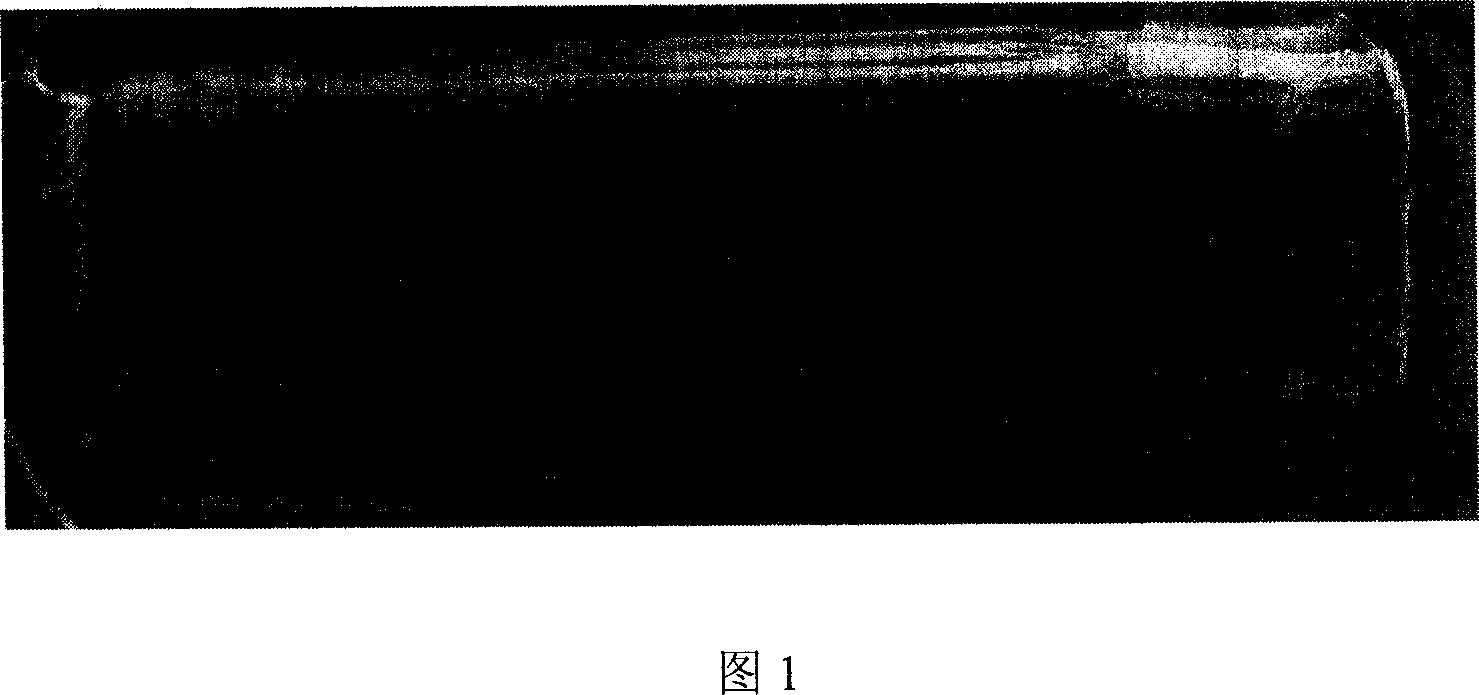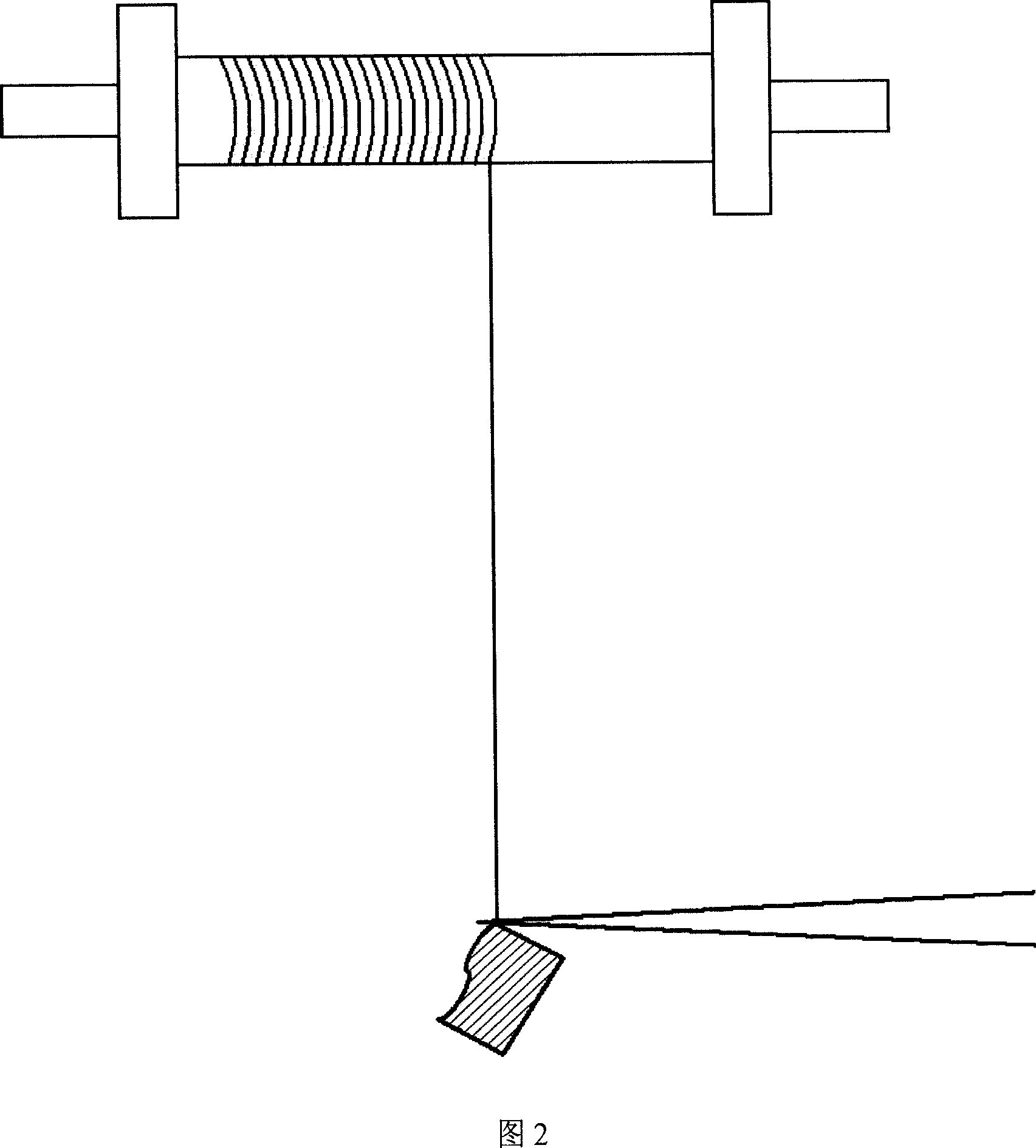Ultralong orientational carbon nano-tube filament/film and its preparation method
A technology of carbon nanotube film and carbon nanotube, which is applied in the direction of oriented carbon nanotube, carbon nanotube, nanostructure manufacturing, etc.
- Summary
- Abstract
- Description
- Claims
- Application Information
AI Technical Summary
Benefits of technology
Problems solved by technology
Method used
Image
Examples
Embodiment 1
[0029] Embodiment 1. This embodiment investigates the preparation of carbon nanotube arrays by the flotation method, adopting a silicon dioxide sheet with an infinite radius of curvature of 1 mm in thickness and 25 mm in length and width of 25 mm as a substrate, and then putting the ball particles into a fixed bed for reaction In the reactor, the temperature was raised to the reaction temperature of 900° C. under the atmosphere of hydrogen and argon. Then, a cyclohexane solution of ferrocene is introduced, the carbon nanotube catalyst precursor ferrocene decomposes in situ to form an iron catalyst, and the carbon source is catalyzed and cracked to form a carbon nanotube array. After 2.5 hours, an array with a length of 5.4 mm can be obtained on the surface of the silicon dioxide wafer (Fig. 1).
[0030] Take out the silicon dioxide substrate, keep the array on its surface, and directly use the stretching tool tweezers to pull a selected section of the carbon nanotube array inc...
Embodiment 2
[0033] Example 2. A silica / zirconia composite ball with a radius of curvature of 1 mm was used as a substrate, and the ball was placed in a moving bed reactor, and the temperature was raised to a reaction temperature of 750° C. under an atmosphere of hydrogen and nitrogen. Then a xylene solution containing 1:1 nickelocene and ferrocene is introduced, the catalyst precursor is decomposed in situ to form a carbon nanotube catalyst, and the carbon source is catalytically cracked to form a carbon nanotube array. An array with a length of 0.5 mm can be obtained on the surface of the ball after 1 hr.
[0034] Peel off the carbon nanotube array obtained above from the surface of the silica sphere, and then use a fixed stretching die to draw a selected section of the carbon nanotube array including one end of a plurality of carbon nanotube bundles to extract a carbon nanotube with a diameter of about 100 μm. The nanotube bundle is continuously stretched at a speed of 0.01m / s, and afte...
Embodiment 3
[0035]Example 3. Quartz fibers with a radius of curvature of 10 μm were used as substrates, and then the fibers were placed in a moving bed reactor, and the temperature was raised to a reaction temperature of 800° C. under an atmosphere of hydrogen and argon. Then a benzene solution of cobalt carbonyl is passed through, the cobalt carbonyl is decomposed in situ to form a nickel catalyst, and the carbon source is catalytically cracked to form a carbon nanotube array. After 0.8hr, an array with a length of 0.3mm can be obtained on the surface of the quartz fiber.
[0036] Take out the quartz fiber covered with the array, keep the array on its surface, directly use the stretching tool tweezers to pull a selected section of the carbon nanotube array including one end of a plurality of carbon nanotube bundles to extract the carbon nanotube bundle with a diameter of 0.8 μm, and pass through Stretching at a speed of 0.1 cm / s is continued, and after 10 minutes of stretching, the carbo...
PUM
| Property | Measurement | Unit |
|---|---|---|
| Length | aaaaa | aaaaa |
| Diameter | aaaaa | aaaaa |
| Thickness | aaaaa | aaaaa |
Abstract
Description
Claims
Application Information
 Login to View More
Login to View More - R&D
- Intellectual Property
- Life Sciences
- Materials
- Tech Scout
- Unparalleled Data Quality
- Higher Quality Content
- 60% Fewer Hallucinations
Browse by: Latest US Patents, China's latest patents, Technical Efficacy Thesaurus, Application Domain, Technology Topic, Popular Technical Reports.
© 2025 PatSnap. All rights reserved.Legal|Privacy policy|Modern Slavery Act Transparency Statement|Sitemap|About US| Contact US: help@patsnap.com



